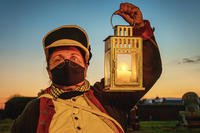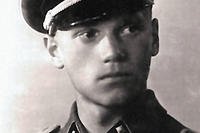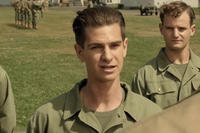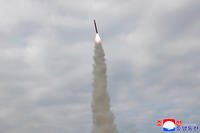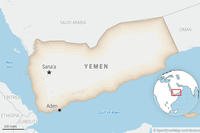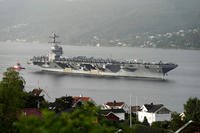When Josefina Guerrero was diagnosed with Hansen's disease -- more commonly known as leprosy -- it looked like her life was over. Her daughter was taken away, and her husband moved out of their home. For a while, she kept up with the treatment necessary to prevent the telltale lesions from her skin. When the Japanese invaded the Philippines, she could no longer access her medication.
As the disease began to advance, Guerrero decided she would not merely die in pain; she was going to live with honor. The Americans and local defense forces were overrun, and her country was occupied by cruel overseers. She wanted to be part of the greater good, so she joined the Philippine Resistance. She was going to become a spy, and would be critical in the recapture of Manila.
Known as Joey, Guerrero's life before the war was as good as she could hope. She had a 2-year-old and married into one of the country's most prestigious families. After her diagnosis in 1941, that all changed. Leprosy was thought to be highly contagious, which is not true. Most exposed to leprosy bacteria never develop the disease. Treatments at the time weren't medically effective, but they could keep the skin ailments at bay.
Japan occupied Manila in January 1942, cutting Guerrero off from what treatments she did have. Those suffering from leprosy in Manila were forced to wear a bell and announce themselves as "unclean." While this might have been devastating to your average Filipino civilian, for Guerrero, it was her ace in the hole.

She began by reporting the troop movements and appearance of Japanese troops near her home. Eventually, she became a courier for the resistance, moving messages and information between units. At first, Japanese soldiers were aggressive with her, forcing her to hide the messages she carried. As her disease progressed, that began to change.
She had taken to wearing a veil, and when the occupiers started to conduct the usual full-body search, she lifted the veil, revealing her lesions. After she announced herself as "unclean," the enemy troops would send her on her way.
Emboldened, Guerrero began transporting weapons and supplies to resistance fighters and mapping out Japanese fortifications and machine-gun nests. It was one of Joey Guerrero's maps the Americans used to bomb fortifications in Manila Harbor on Sept. 21, 1944.
The very next month, the U.S. Army landed in Leyte to begin the recapture of the islands from Japanese occupation. In December 1944 and January 1945, U.S. troops landed on Luzon. In the last week of January, the Americans had retaken nearby Clark Field and landed paratroopers from the 11th Airborne south of the city.
The 1st Cavalry Division was 35 miles to the north of Manila, part of a pincer movement to pressure the Japanese defenders. Japanese resistance was stiffening, however, and between the Americans in the north and the city were massive minefields preventing the American advance.
Joey Guerrero was going to take a map of the mines to the American headquarters in Calumpit. She had no idea where it was, but she taped the map to her back and started walking. Despite Japanese checkpoints and guards everywhere, she walked 25 miles to the city of Malolos undisturbed. From there, she took a boat around the combat zone and dodged river pirates before walking the rest of the way.
When she arrived, she discovered the Americans had advanced to Malolos. So she doubled back to deliver it to an officer of the 37th Infantry Division. She was so exhausted, she could barely move, but the Americans were free to advance on Manila through the minefields. Guerrero advanced with them, caring for the wounded and taking children to safety.

The city was devastated in the battle, but the Americans pushed the Japanese out. After the fighting ended, Guerrero was exiled to a leprosarium 15 miles away. Conditions were terrible, so she did her best to clean it up and shine a light on the plight of those suffering there. A letter she wrote to a friend in the U.S. led to an exposé on the leprosarium -- and its eventual cleanup.
Through the exposé, Guerrero learned about advances in treating her disease, and in 1948, she was admitted to the United States to undergo the new treatment. She was the first foreigner with leprosy ever given a visa to the U.S. The publicity from this notable first led to a story about her wartime exploits in Time magazine.
For these exploits, she received the Medal of Freedom with Silver Palm, a decoration created by President Harry Truman to honor foreign civilians who resisted occupation and helped save American lives.

By 1948, her disease had advanced so much that it would take nine years of treatment to fully cure. After being discharged in 1957, she had trouble finding a job and faced deportation back to the Philippines. World War II veterans and members of the press rallied to her cause, pressing for permanent residency and citizenship. She became an American citizen in 1967 and spent the rest of her life in the U.S., where she advocated for the destigmatization of leprosy.
-- Blake Stilwell can be reached at blake.stilwell@military.com. He can also be found on Twitter @blakestilwell or on LinkedIn.
Want to Learn More About Military Life?
Whether you're thinking of joining the military, looking for post-military careers or keeping up with military life and benefits, Military.com has you covered. Subscribe to Military.com to have military news, updates and resources delivered directly to your inbox.



